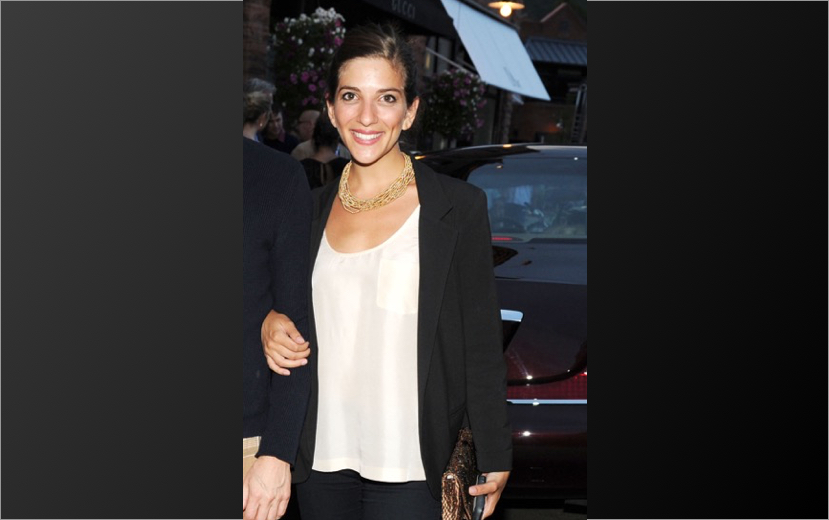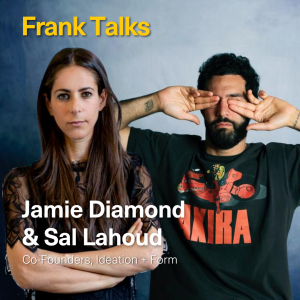Concetta Duncan is Head of Communications at the Smithsonian’s National Portrait Gallery, overseeing all press, marketing and social media for the institution. Prior to the Smithsonian, Concetta worked in the New York art world for nearly a decade where she directed media relations campaigns and events internationally across the U.S., Europe, the UAE and Hong Kong for clients including Art Basel, Sean Kelly Gallery, and Performa, among others, and in-house at Pace Gallery. In Hanoi, Vietnam she managed sponsorship for the inaugural edition of the city’s first open-air arts festival after serving for two seasons as the lead on press and marketing at the American Dance Festival. She is currently a member of Performa’s Advisory Council and Membership Chair of ArtTable DC’s Executive Committee. We are excited to share Concetta’s Frank Talk here with you!
What was your first job in the Arts?
My first job was running the press office for the American Dance Festival (ADF) in Durham, North Carolina. It was a big job and I was thrilled because all of the leading modern dance companies like Bill T. Jones, Paul Taylor and Shen Wei performed at ADF before heading to New York venues at BAM or Lincoln Center so I had the opportunity to work with all the legends of the industry. Right out of school I was managing a staff of four during the summer festival and served as a liaison to the NEA’s Institute for Dance Criticism conference. I had the opportunity to handle ADF’s 30th anniversary in North Carolina followed by the festival’s 75th anniversary, two of its largest seasons.
What was the most useful or important thing you learned at that job?
The most important thing I learned in that position is that being a great businesswoman and being kind are not mutually exclusive. Jodee Nimericther is now the festival’s director and she set a great example of balanced leadership. ADF gave me a shot right out of school and the experience I gained there allowed me to break through in New York.
Tell us a little more about yourself. When did you realize you wanted to pursue a career in this industry?
I always wanted to work in the arts. From an early age I can remember wanting to be the director of Lincoln Center or a major festival. I had professors at Connecticut College who encouraged my interest in arts administration and I remember drafting letters (without any luck) to the director of the Venice Biennale in rusty Italian to see if I could squeeze into an internship overseas. Over the years, I have found it fascinating to work with directors of arts and cultural institutions. To me, the executives leading these institutions are as fascinating as the art itself. Brilliant minds! Communications is a great field because you get to liaise with the artists, work with curators, and help communicate their vision to the public through the press.
What do you do now?
I am currently Head of Communications for the Smithsonian’s National Portrait Gallery, overseeing all press, marketing and social media for the institution. My first project in the role was directing the communications campaign for the unveiling of the Obama portraits by Kehinde Wiley and Amy Sherald. The campaign went viral and we broke records for press and attendance. It has been non-stop ever since!
Where are you from?
I am from Massachusetts.
What is the arts community like there?
The arts community in Boston is solid though not as thriving as New York or London. I am originally from Western Massachusetts where the arts were more limited but I was lucky enough to find professionals who guided me and helped me develop along the way.
Has where you come from shaped what you do in the arts today?
Growing up I had the luxury of exploring the arts. I worked hard and I was fortunate enough to participate in ballet and violin lessons, which taught me an appreciation for the arts early on. I think I also had the ability to imagine a life for myself in New York, a cosmopolitan way of living and had the determination to go after it. I ultimately chose a different path than many of my friends and family. For a while, I aimed to take on any project that would keep me in New York and let me travel overseas. Thus, the art world was a natural fit. London, Basel, Hong Kong, Sharjah, Venice. It was the best!
What is the best piece of advice you can give about working in the art world?
To work in the art world you have to have thick skin. It is a demanding industry driven by personality and taste, but people also rely on and expect results. I think you need to have the courage to develop your own sense of style along the way and to take risks to go after opportunities, even before they might be fully formed.
What is one of your greatest accomplishments in your career so far?
One of my greatest accomplishments was spearheading the press campaign for the unveiling of the Obama portraits by Kehinde Wiley and Amy Sherald in my current role at the Smithsonian’s National Portrait Gallery. I could tell right away the unveiling of these two portraits was going to be something exceptional. There was no room for error. One leak and the whole campaign would have been over, but the experience and professionalism of the Smithsonian team was incredible. Following the event, I received a thank you letter from the President and Mrs. Obama and that will always be a career highlight.
What has been a challenge for you?
The challenge along the way has always been taking a moment to reflect on how far my quest in the art world has taken me. When I first started out, I used to love working on the art fairs because every season it was a great way to measure the number of galleries and artists I had come to know in comparison to the year prior. I’m still learning and it is always good to sometimes take a step back for some perspective.
What is something you do every day at work?
Every day I walk in and think about how we can do things better. The finish line is always one step ahead.
What is one of the weirdest things you have had to do on the job in your career?
Probably taking a press trip of journalists to an underground club near Sharjah for a night out…that’s all I’ll say.
What defines a good employee? What defines a good boss?
A good employee is someone who is willing to work hard, takes a proactive approach, is willing to try new ideas and is enthusiastic about what they do. A good boss is someone who will work to cultivate people’s talents, gives ownership to their team, and always makes room for the right people and finds ways to help them grow.
What do you think makes a person hirable?
A sense of enthusiasm, a willingness to learn and a proactive approach are key.
What is your advice to making yourself stand out in your workplace?
Take windows of opportunities when they are available. Or make your own!
What are things you can do proactively to boost your CV?
I recommend adding in quantitative measures within your CV. Numbers are a quick way to give someone a sense of the level at which you are able to deliver and the workload you are able to take on. It never hurts to show your ability to produce results.
Are there any tips you can give people entering the workforce?
Don’t be afraid to “pitch” yourself. Often managers or business owners are so busy they don’t have the time to figure out how an out-of-the-box candidate might be able to contribute to the position they have available. If you can help them envision it, a great employer will make room for the right people.
What is the best exhibition you have seen in the last year?
One of the best exhibitions I’ve seen more recently was Zanele Muholi’s show at Yancey Richardson Gallery in Chelsea which overlapped with her performance for the latest Performa Biennial. I spent time in South Africa and I think Muholi is an artist to keep an eye on.
If you could own a work by 5 different artists, who would be in your collection?
It’s always hard to chose between artists, or even just photographs within a series. I always stop to look at an Alec Soth photograph. I would also like to collect Malick Sidibé’s work and I think Richard Mosse is incredibly daring. For painting it would definitely be Willem de Kooning. I have also always admired Shirin Neshat. I saw her dual-channel installation Rapture (1999) in Germany years ago, and the memory of that work has stayed with me for more than a decade.




